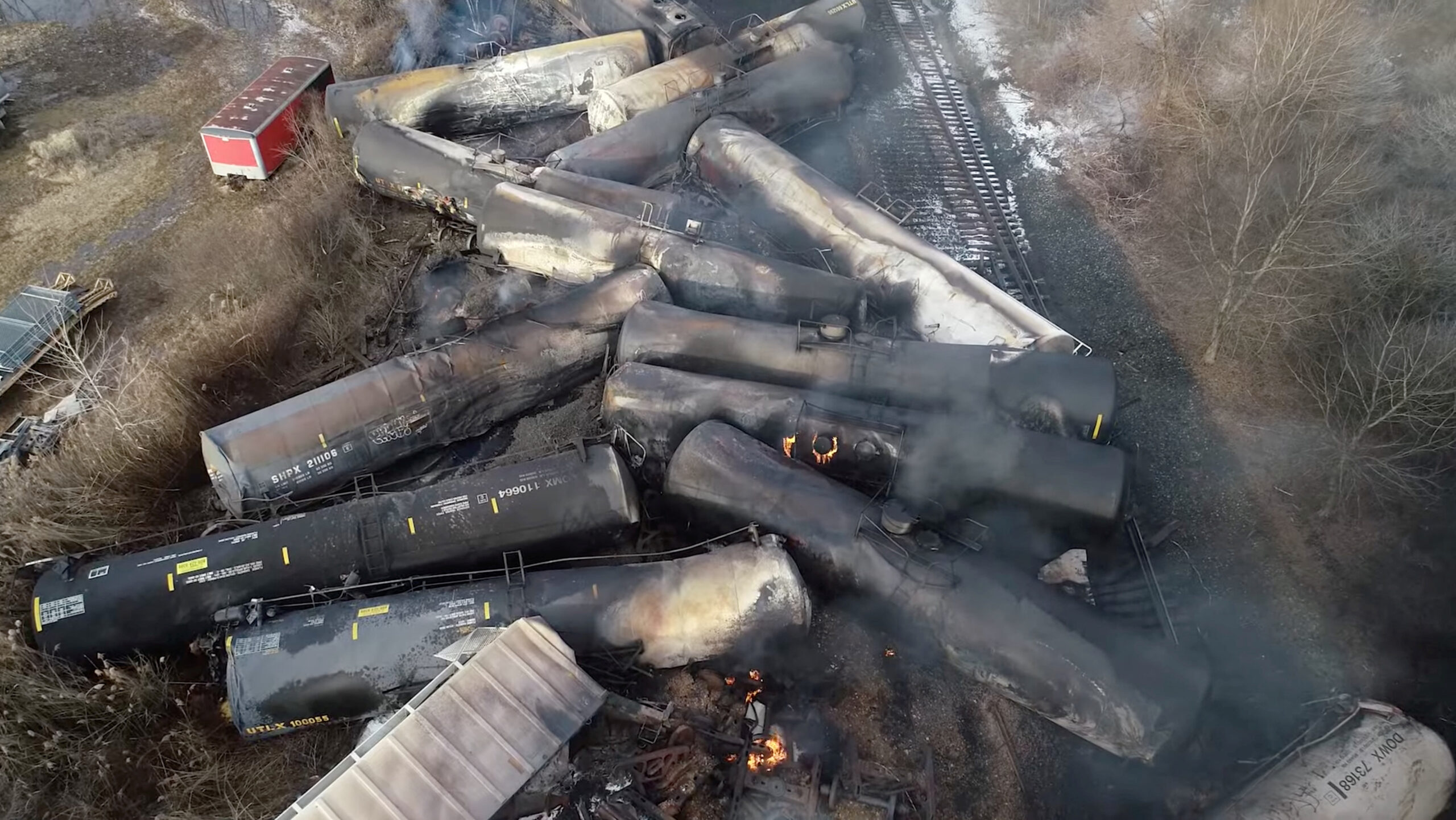The safety of communities should always be the top priority

Drone footage shows the freight train derailment in East Palestine, Ohio, U.S., February 6, 2023 in this screengrab obtained from a handout video released by the National Transportation Safety Board.
This editorial is the opinion of Morgan Hill Life
In the past 14 months, more than 350 trains have derailed in California, according to the California Governor’s Office of Emergency Services. Four of them produced hazardous material spills.

Americans learned how such rail accidents impact lives when Feb. 3 a 150-car Norfolk Southern freight train derailed in the eastern Ohio town of East Palestine, a village of about 5,000 people.
The resulting fireball explosion produced a tower of black smoke that spread over the community. The plume carried a toxic chemical used in manufacturing PVC pipes called vinyl chloride, forcing a mass evacuation. During the next week, more than 43,000 fish died in nearby waterways and wild and domestic animals died from the chemical release.
This accident brought national media attention to the dangers of industrial chemicals transported on train tracks. These include freight trains traveling through the South Valley on Union Pacific rails along Monterey Road. Carrying various cargo — including crude oil to refineries in Richmond — they pass through the downtowns of Gilroy and Morgan Hill and unincorporated San Martin.
After East Palestine’s devastation, no doubt local residents have grown dramatically concerned a similar disaster here might cause deaths and serious injury as well as long-term health problems.
The safety of South Valley communities from toxic train derailments and other accidents depends on a variety of factors.
These include the volume of rail traffic, the type of cargo being transported, the condition of the tracks, the safety regulations in place, and the emergency response preparedness of the local communities. The federal government has established safety regulations and requirements for rail operators to ensure the safety of their operations, including the transportation of hazardous materials.

Because freight rail accidents can severely impact lives, it’s vital local officials and first responders be prepared for these emergencies. It’s also important residents stay aware of the risks and take appropriate steps in case of an emergency.
Lowering safety regulations for railroads can put communities in danger by increasing the risk of train accidents, derailments, and spills involving hazardous materials.
Rail companies have influential lobbyists who have fought attempts to increase hazardous materials regulations. They put the pursuit of profits over people’s safety by finding ways to lower operating costs. Trains have grown longer, putting more wear and tear on the tracks and infrastructure such as bridges.
The safety of communities should always be the top priority. When trains carrying hazardous materials derail and toxic spills occur, the incident poses serious health perils to those living nearby.

Train accidents releasing hazardous chemicals are not only a local public health and safety risk but also can impact a community’s economy and environment. When a toxic spill occurs, businesses may be forced to shut down, residents may be evacuated from their homes, and property values can plummet. The cost of cleaning up spills can be astronomical. The burden of footing the bill is often placed on taxpayers.
Toxic spills can have long-lasting effects on our ecosystems, damaging wildlife habitats and polluting our air and water. A Southern Pacific train accident near Dunsmuir in July 1991 caused a chemical tank car to fall into the Sacramento River, spilling 19,000 gallons of the herbicide metam sodium. The chemical impacts extended more than 20 miles from the spill site to Lake Shasta.
When safety regulations are lowered or eliminated, there is less oversight and accountability for railroad operators, which can lead to unsafe operating practices and increased risks for accidents and spills.
It’s critical our national and state leaders hold train companies to the highest standards of safety to prevent these accidents from happening in the first place — and minimize damage to a community from hazardous material spills if they do occur.
Although the risks are low, South Valley residents are subject every day to dangerous cargo passing through the region on the rails.
By working to prevent these accidents, we can preserve public health and safety, protect our economy and guard our natural resources and preserve our environment for future generations.
Editor’s note: This editorial was written with assistance from the OpenAI GPT artificial intelligence system.






